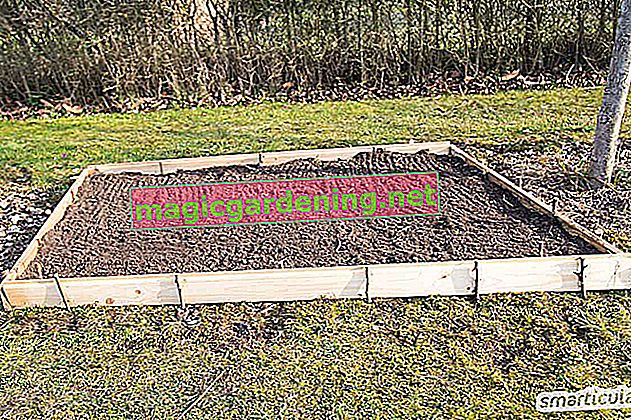
1. Preparations
Mow the lawn to about four centimeters and then apply a fertilizer to the entire area. The supply of nutrients strengthens the lawn and makes it more resistant to the upcoming maintenance measures. If the temperature is humid and warm, the old lawn will thrive well within the next two weeks, so you can start renewing.
also read
- A lawn repair without digging
- Digging up lawn with a tiller
- Dig up the lawn with a tiller
2. Mowing
Use a gasoline lawnmower as it can do more than an electric lawnmower. Set the device to the lowest setting and mow the lawn completely.
3. Scarifying
By scarifying, you remove the old thatch, moss and weeds from the area. This measure promotes air circulation and improves the water balance of the soil.
Unlike conventional scarifying, you set the knives so deep that they cut into the ground for a few millimeters. Your instinct is required here, because the knives wear out quickly. Depending on the type of lawn and the degree of matting, you will pull more or less biomass out of the earth with this work step.
Drive the lawn area with the scarifier (€ 76.01 at Amazon *) completely in longitudinal tracks and then in transverse rows. Repeat this step if there are still large weed nests in the lawn. Thoroughly remove the residue from the lawn.
4. Compensate for unevenness
If the lawn is uneven, apply a thin layer of sandy topsoil. The layer should not exceed a height of ten millimeters.
5. overseeding
There are special seed mixtures that are suitable for lawn renovation. The seeds should be distributed evenly and without gaps over the entire area. Seeding can be done by hand. A spreader offers a convenient alternative.
6. Fertilizing
A lawn fertilizer provides the seeds with nutrients to grow. Make sure you have a high percentage of phosphorus and nitrogen. Matured compost is ideal as it also protects the soil from drying out. The compost layer should not be thicker than five millimeters.
7. Soak
In order for the seeds to have optimal contact with the ground, you need to water the entire area thoroughly. The lawn must not dry out in the coming weeks. Water again as soon as the substrate turns light brown on the surface.
Tips and useful information
Spring is the ideal time for lawn renewal, so that the lawn can regenerate under mild temperature conditions. May is the fastest growing time when the lawn can recover most quickly from the damage caused by scarifying. Renewing your lawn in this way will save life in the deeper soil layers. They prevent the structure from being completely rearranged.








